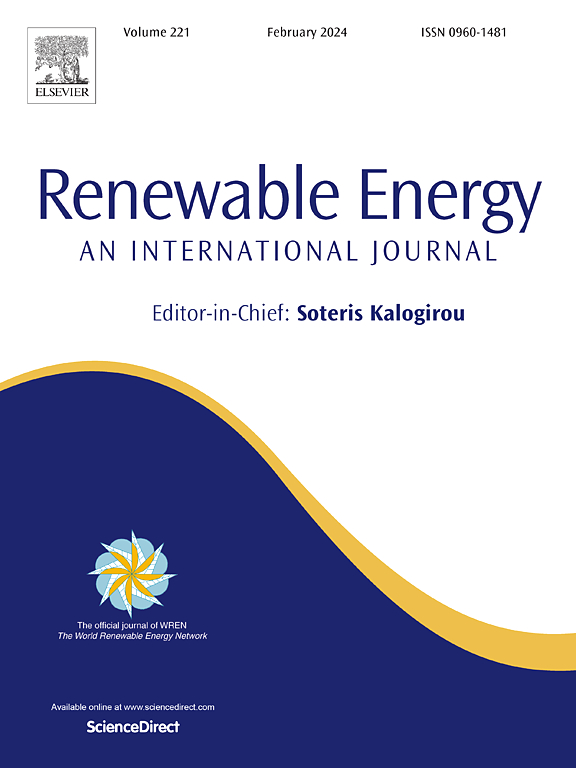A high-precision photovoltaic power forecasting model leveraging low-fidelity data through decoupled informer with multi-moment guidance
IF 9
1区 工程技术
Q1 ENERGY & FUELS
引用次数: 0
Abstract
Accurate power generation forecasting for distributed photovoltaic (PV) systems is essential for the grid with increased distributed PV penetration. This task depends on high-fidelity historical and forecast weather data, but obtaining such data is challenging. This paper proposes a decoupled Informer with multi-moment guidance (DMGformer), using real-world low-fidelity historical and forecast weather data for day-ahead hourly distributed PV power forecasting. Specifically, the framework employs a decoupled history-forecast (DHF) structure where the encoder exclusively captures long-term historical meteorological and power generation dependencies, while the decoder uses forecast data and historical insights to predict future power. Additionally, the multi-moment guidance (MMG) module is designed to introduce domain knowledge that multiple corresponding moments from historical data can contribute to the power forecasting of a future moment in the short term. To evaluate the feasibility and effectiveness of the model, we construct a real-world dataset of 500 sites, containing hourly power generation and low-fidelity historical and forecast weather data. The results highlight the impressive performance of the proposed DMGformer, achieving a 24.11 % reduction in Mean Absolute Error (MAE) and a 1.46 % improvement in accuracy compared to the suboptimal Informer. Furthermore, the DHF and MMG effectively enhance the performance of LSTM (Long Short-Term Memory), Transformer, and Informer models, validating the generalizability of these two paradigms. The DMGformer exhibits superior efficiency in utilizing low-fidelity meteorological data to achieve precise power generation forecasting, especially for distributed PV plants, which facilitates optimized resource allocation for sustainable energy production.
基于解耦多矩制导的低保真度数据的高精度光伏功率预测模型
随着分布式光伏发电的普及,分布式光伏发电系统的准确发电预测对电网的发展至关重要。这项任务依赖于高保真的历史和预报天气数据,但获得这样的数据是具有挑战性的。本文提出了一种带多矩制导的解耦信息器(DMGformer),利用真实世界的低保真历史和预报天气数据进行日前一小时分布式光伏发电功率预测。具体来说,该框架采用了解耦的历史预测(DHF)结构,其中编码器专门捕获长期历史气象和发电依赖关系,而解码器使用预测数据和历史见解来预测未来的电力。此外,设计了多矩制导(MMG)模块,引入领域知识,从历史数据中获得多个相应的矩,可以在短期内对未来时刻的功率进行预测。为了评估该模型的可行性和有效性,我们构建了一个包含500个站点的真实数据集,其中包含每小时发电量和低保真历史和预报天气数据。结果突出了所提出的DMGformer令人印象深刻的性能,与次优的Informer相比,平均绝对误差(MAE)降低了24.11%,精度提高了1.46%。此外,DHF和MMG有效地提高了LSTM(长短期记忆)、Transformer和Informer模型的性能,验证了这两种范式的可推广性。DMGformer在利用低保真气象数据实现精确的发电预测方面表现出卓越的效率,特别是对分布式光伏电站,有利于优化资源配置,实现可持续能源生产。
本文章由计算机程序翻译,如有差异,请以英文原文为准。
求助全文
约1分钟内获得全文
求助全文
来源期刊

Renewable Energy
工程技术-能源与燃料
CiteScore
18.40
自引率
9.20%
发文量
1955
审稿时长
6.6 months
期刊介绍:
Renewable Energy journal is dedicated to advancing knowledge and disseminating insights on various topics and technologies within renewable energy systems and components. Our mission is to support researchers, engineers, economists, manufacturers, NGOs, associations, and societies in staying updated on new developments in their respective fields and applying alternative energy solutions to current practices.
As an international, multidisciplinary journal in renewable energy engineering and research, we strive to be a premier peer-reviewed platform and a trusted source of original research and reviews in the field of renewable energy. Join us in our endeavor to drive innovation and progress in sustainable energy solutions.
 求助内容:
求助内容: 应助结果提醒方式:
应助结果提醒方式:


